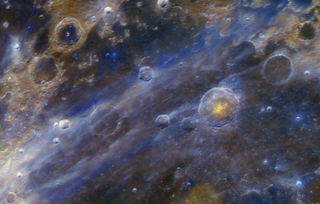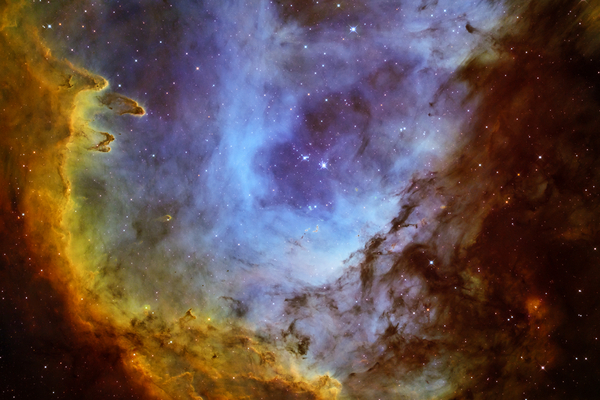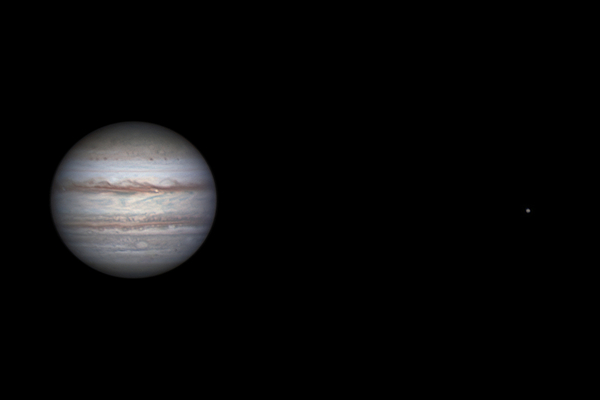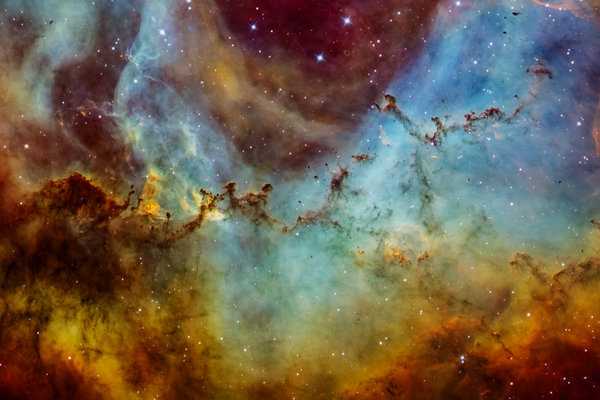Astrophoto of the month - February 2022 - Bullialdus as Tycho debris slams through it - with 5 filters-2
Interesting color moon captured with 5 filters by László Francsics
A wonderful and special astrophotography image each month by Hungarian astrophotographers.
Is the Moon colorful?
The Moon is basically a gray, seemingly monotonous celestial body. However, this is not entirely true. The surface of the Moon is not perfectly gray, though it is covered with lunar regolith - an extremely fine gray powder, of which one of the most famous photographs was taken in 1969, when Neil Armstrong left his footprint in it. This dust covers the bedrock, which has very slight color variations of gray. These tiny differences can be captured with digital technology, amplified by a hypersaturation process, and thus visually presented. Without hypersaturation, this image would also depict a gray lunar surface detail.
The colors of the Moon
The either reddish or bluish shades of the Moon that are almost invisible to the naked eye are easy to capture with digital cameras.
Iron-oxide is responsible for the red hue, while the blues are due to titanium-oxides in the rocks of the basalt plains, not water (there is no water on the moon).If our black-and-white camera is covered by a series of large spectral range astronomical filters, not only reddish and bluish colors pop, but also fairly subtle shades may appear in the final, processed image.
Strange region on the Moon
The Bullialdus is an utterly uninteresting crater on the Moon - at first glance. At the second, though, it may appear that it is located at a special location - below the most striking debris strip that precipitated from the Tycho crater 100 million years ago. If photographed in color, we can see that the crater edge has an astounding bluish color and an even more astonishing yellow central tip. This is all surrounded by a reddish “mare” (lunar basalt sea) area, rich in iron-oxide, in which the debris of the Tycho impact forms a phenomenal light blue band. The image was taken with I-R-G-B-U (infrared-red-green-blue-ultraviolet) filters in the spectral range of 800 nm to 320 nm, which is a little wider than the "visual" range perceptible to the naked eye.
Dr. László Francsics





